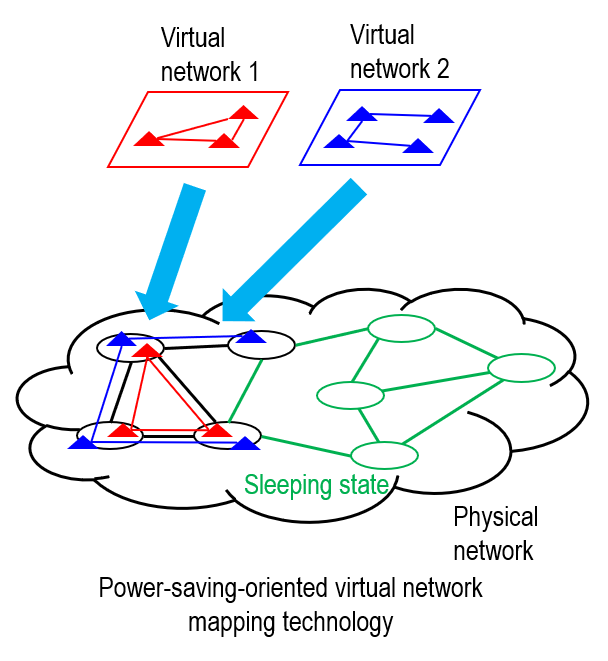Example
Research on sustainable network infrastructure
With the spread of video streaming services and the Internet of Things (IoT), Internet traffic continues to increase exponentially. To respond to this, facilities for the Internet have been continuously upgraded, and along with this, the power consumption for using the Internet has been continuing to increase exponentially. It has been reported that if the power consumption continues to increase at the current rate, all of the electricity generated in Japan will be consumed solely for the Internet in the future.
We are studying a technology for power-saving of the Internet from the perspective of network design and control in order to enable the Internet to grow sustainably while reducing power consumption. We have devised a virtual network mapping technique that is oriented toward power saving. This technology uses mathematical programming and graph theory to determine where in the physical network a virtual network should be constructed, thereby significantly reducing power consumption compared to conventional technologies. In the future, we plan to further reduce power consumption of the Internet by introducing machine learning techniques, such as deep reinforcement learning.

We are studying a technology for power-saving of the Internet from the perspective of network design and control in order to enable the Internet to grow sustainably while reducing power consumption. We have devised a virtual network mapping technique that is oriented toward power saving. This technology uses mathematical programming and graph theory to determine where in the physical network a virtual network should be constructed, thereby significantly reducing power consumption compared to conventional technologies. In the future, we plan to further reduce power consumption of the Internet by introducing machine learning techniques, such as deep reinforcement learning.

Representative
